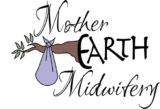Abstract
“Global efforts to improve maternal health are the fifth focus goal of the Millennium Development Goals adopted by the international community in 2000. While maternal mortality is an epidemic, and the death of a woman in childbirth is tragic, certain assumptions that frame the risk of death for reproductive aged women continue to hinge on the anthropological theory of the “obstetric dilemma.” According to this theory, a cost of hominin selection to bipedalism is the reduction of the pelvic girdle; in tension with increasing encephalization, this reduction results in cephalopelvic disproportion, creating an assumed fragile relationship between a woman, her reproductive body, and the neonates she gives birth to. This theory, conceived in the 19th century, gained traction in the paleoanthropological literature in the mid‐20th century. Supported by biomedical discourses, it was cited as the definitive reason for difficulties in human birth. Bioarchaeological research supported this narrative by utilizing demographic parameters that depict the death of young women from reproductive complications. But the roles of biomedical and cultural practices that place women at higher risk for morbidity and early mortality are often not considered. This review argues that reinforcing the obstetrical dilemma by framing reproductive complications as the direct result of evolutionary forces conceals the larger health disparities and risks that women face globally. The obstetrical dilemma theory shifts the focus away from other physiological and cultural components that have evolved in concert with bipedalism to ensure the safe delivery of mother and child. It also sets the stage for a framework of biological determinism and structural violence in which the reproductive aged female is a product of her pathologized reproductive body. But what puts reproductive aged women at risk for higher rates of morbidity and mortality goes far beyond the reproductive body. Moving beyond reproduction as the root causes of health inequalities reveals gendered‐based oppression and inequality in health analyses. In this new model, maternal mortality can be seen as a sensitive indicator of inequality and social development, and can be explored for what it is telling us about women’s health and lives. This article reviews the research in pelvic architecture and cephalopelvic relationships from the subfields of evolutionary biology, paleoanthropology, bioarchaeology, medical anthropology, and medicine, juxtaposing it with historical, ethnographic, and global maternal health analyses to offer a biocultural examination of maternal mortality and reproductive risk management. It reveals the structural violence against reproductive aged women inherent in the biomedical management of birth. By reframing birth as normal, not pathological, global health initiatives can consider new policies that focus on larger issues of disparity (e.g., poverty, lack of education, and poor nutrition) and support better health outcomes across the spectrum of life for women globally. Am J Phys Anthropol 159:S150–S171, 2016. © 2016 American Association of Physical Anthropologists”
